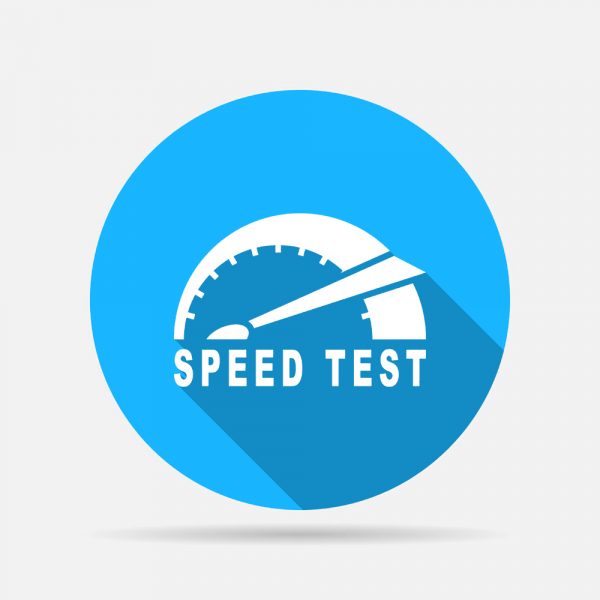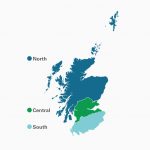H1 2021 – Fastest National UK Mobile and Home Broadband ISPs

We’re nearly six months into 2021 and that means it’s time to take a quick look back to see how the UK’s average broadband download and upload speeds have changed across the fastest nationally available fixed line ISPs and mobile network operators. The good news is there’s been a good increase from most providers.
The following results tend to be impacted by a number of factors, not least the rising coverage of faster technologies and any associated take-up by consumers. In that sense it helps to understand any key changes in network deployments since the start of 2021 and there have been a few, which we’ve summarised below.
In terms of fixed line connectivity, the focus today has now switched from growing “superfast broadband” (30Mbps+) coverage – reaching c.97% of premises (hasn’t changed much over the past 2 years) – to fostering the newer generation of “gigabit-capable” (i.e. 1Gbps+ or 1000Mbps+) networks. At the start of 2021 some 37.4% had access to gigabit speeds (here).
Advertisement
In terms of take-up, Ofcom states (here) that at the end of 2020 some 60% of connections were now “superfast” or better (up from 57% last year) and just 25% had taken an FTTP service (down from 30% last year due to the rapid pace of build). No specific figure was provided for gigabit adoption, but that wouldn’t tell us much anyway, since not everybody opts for the top 1Gbps+ tier on new networks (it’s often the most expensive option).
So far, most of the gigabit-capable broadband builds have been conducted by commercial operators in urban areas, which could hit around 80% of premises by the end of 2025. The Government’s new £5bn Project Gigabit aims to lift this up to at least 85% by that same date, but the main contracts under that won’t even start to be signed until H1 2022.
As for 4G based mobile broadband networks. The good news is that the new £1bn Shared Rural Network (SRN) project is finally starting to make progress (here), but the rural focus of this rollout means that it won’t contribute much to the overall scores in this article. Meanwhile, the coverage of ultrafast 5G mobile is improving at a more rapid pace, yet its overall reach and take-up is still low. Not to mention that the four primary mobile operators have only just gained access to more spectrum (here).
Fastest Fixed Line Broadband ISPs for H1 2021
The following results stem from Thinkbroadband’s independent speedtest database (including ISPreview’s Broadband Speedtest). In this study, we’ve only included independent ISPs with strong national availability, although there is a separate table for smaller alternative network ISPs on page 2 – these are difficult to include because they aren’t yet available to the majority of premises and thus don’t produce much test data.
Advertisement
Naturally, there are some common caveats to consider with speedtest based results, not least that such scores tend to be more reflective of take-up than network availability. For example, some ISPs may have a much larger proportion of customers on slower copper ADSL or FTTC lines and that can weigh against anybody on faster FTTP or gigabit packages with the same provider (i.e. pulling average speeds down).
Average Download Speeds – Top 10
| No. | Operator | 2021 H1 (Top 10%) | 2020 H2 (Top 10%) | Change % |
| 1. | Virgin Media | 141Mbps (331.2Mbps) | 118.3Mbps (236.9Mbps) | 19.19% |
| 2. | Zen Internet | 89Mbps (234.4Mbps) | 40.8Mbps (70.7Mbps) | 118.14% |
| 3. | iDNET | 80.1Mbps (221.1Mbps) | 42Mbps (71.5Mbps) | 90.71% |
| 4. | BT | 58.4Mbps (95Mbps) | 46.2Mbps (72.8Mbps) | 26.41% |
| 5. | AAISP | 58.1Mbps (74.2Mbps) | 53.6Mbps (99.8Mbps) | 8.4% |
| 6. | Vodafone | 49.9Mbps (73Mbps) | 45.1Mbps (71.6Mbps) | 10.64% |
| 7. | EE | 37Mbps (68.9Mbps) | 30.4Mbps (62.8Mbps) | 21.71% |
| 8. | TalkTalk | 33.4Mbps (65.7Mbps) | 28Mbps (56.6Mbps) | 19.29% |
| 9. | Sky Broadband | 32.4Mbps (64.4Mbps) | 27.7Mbps (58.5Mbps) | 16.97% |
| 10. | Plusnet | 28Mbps (58.5Mbps) | 25.6Mbps (53.2Mbps) | 9.38% |
Average Upload Speeds – Top 10
| No. | Operator | 2021 H1 |
2020 H2 |
Change % |
| 1. | Zen Internet | 23.5Mbps | 14.3Mbps | 64.34% |
| 2. | iDNET | 19.3Mbps | 10.3Mbps | 87.38% |
| 3. | Virgin Media | 17.1Mbps | 14.9Mbps | 14.77% |
| 4. | Vodafone | 15.8Mbps | 13.3Mbps | 18.8% |
| 5. | AAISP | 13.8Mbps | 14Mbps | -1.43% |
| 6. | BT | 13.3Mbps | 11Mbps | 20.91% |
| 7. | EE | 9.3Mbps | 7.3Mbps | 27.4% |
| 8. | Sky Broadband (tied) | 8.3Mbps | 7.1Mbps | 16.9% |
| 9. | TalkTalk (tied) | 8.3Mbps | 7Mbps | 18.57% |
| 10. | Plusnet | 6.6Mbps | 6.1Mbps | 8.2% |
Overall, the average download speed of the top national providers was 60.73Mbps (up from 45.77Mbps at the end of 2020) and the average upload speed hit 13.53Mbps (up from 10.53Mbps). Happily, almost every single ISP saw a speed improvement, and some (e.g. iDNET and Zen Internet) reported a near doubling of their speeds from the last update.
Advertisement
We know from other information that Zen has seen a surge in take-up of their “full fibre” (FTTP) packages, and we assume that iDNET, which inhabits a similar corner of the market, is probably seeing similar growth. Meanwhile, Virgin Media’s performance increase will have been aided by the increasingly wide availability of their new gigabit packages, but their upload speeds remain hobbled by the older EuroDOCSIS 3.0 network.
Finally, the reason why Plusnet sits at the bottom is partly because they’re the only provider in the whole list without any “ultrafast” (100Mbps+) packages to sell.
Now flick over to page 2 to see how the fastest full fibre alternative network (altnet) ISPs and mobile operators performed.
Mark is a professional technology writer, IT consultant and computer engineer from Dorset (England), he also founded ISPreview in 1999 and enjoys analysing the latest telecoms and broadband developments. Find me on X (Twitter), Mastodon, Facebook, BlueSky, Threads.net and Linkedin.
« Full Fibre ISP KCOM Sells National UK ICT Business to Nasstar
BT Sign OneWeb Deal to Tackle UK Rural Broadband Slow Spots »






















































Haha Plusnet at the bottom table! Because they don’t sell G.fast and FTTP
So what you can read from this is that customers at Plusnet are moving from the 36Mbps average to the 66Mbps packages (assuming all other things don’t change much).
Plusnet’s increase may simply be because those on the lower speed products have left to go to a different ISP where Ultrafast is available – it doesn’t need any connections to have actually got faster.
Since Vodafone is also on the second page table (FTTP alt net), shouldn’t the same apply to TalkTalk and Zen since you can get Cityfibre based services on the latter?
Not really, backhaul will different. Would be like listing all Openreach provided services the same.
Yes I’m well aware that ISPs use different backhaul links. But results on page 1 appear to be all on Openreach based FTTx services (except VM) while page 2 is for non Openreach based FTTP. So since VF, TT and Zen all sell services on both Openreach FTTx and Cityfibre FTTP platforms, then I would also expect to TT and Zen on the second page.
Aaaah OK.
Quote “ So since VF, TT and Zen all sell services on both Openreach FTTx and Cityfibre FTTP platforms, then I would also expect to TT and Zen on the second page.”
Only if there was a sufficient number of tests to warrant inclusion in the TBB data.
I do wish a more meaningful figure, like median, would be used. An average is too easy to sway by outliers, especially upwards.
If Zen achieve an average upload speed of 23.5M across their entire user base, that is on the face of it astounding. But maybe 15% of their customers take the 900/110 product, and the remaining 85% have an average 8M upload.